HDR, 4K – The Content Force is Ready for a Reawakening
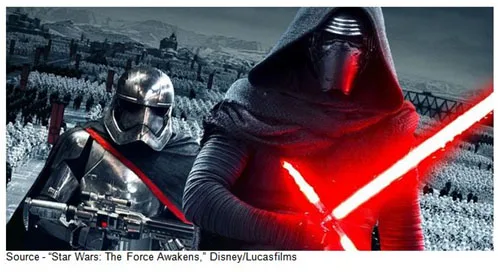
At times like this, it’s nice to have friends. You know, friends inside Dolby so you can view/hear the latest segment of the Star Wars franchise as it is really meant to be enjoyed – brilliant video, soul wrenching audio.
Yes, it’s very good if you’re viewing it at your local theater, it’ll be good when it’s released to stream to your HDR (high dynamic range) 4K TV set, it’ll be nice streamed to your brilliant screen iPad Pro and it’ll be okay viewed while you’re running around with your best-of-breed smartphone.
But nothing beats one of Dolby’s finely tuned theaters (and probably IMAX) – tuned projectors and balanced Atmos sound that is everywhere, including inside of you.
Deep black space, vibrant colors, an immersive soundtrack – there’s a reason you go to the theater. And, while you want the same – or pretty close to it – from your home set, you understand why you’re never going to get it from your second or third screen.
Now that 4K sets are mainstream (and dirt-cheap), the screen manufacturers and retailers have been looking around for something to boost sales/profits.
Well, just in time, the content production industry has come up with a long-range plan for the stuff you consume. First out of the SMPTE (Society of Motion Picture & Television Engineers) work is HDR – no relation to HDR for photos. HDR delivers on a wide range of levels to help everyone – retailer, producer, streaming provider and yes, you the viewer/consumer.
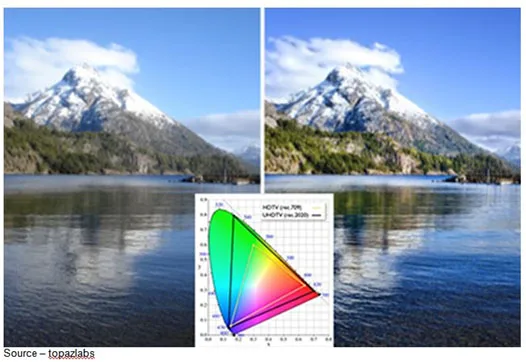
First of all, you can see the difference in the picture – not just more pixels that you have with your 4K set, but better pixels because HDR expands the range of contrast and color of the pixels that are there.
Bright images are brighter and they have greater depth – the full range of blues, greens, reds, blacks.
No it’s not just like 3D that people said would change your life forever … you can see the difference, not get sick, appreciate it.
Trust me!
Of course, my kid will tell you he doesn’t care because TV is dead. In fact, if you do a Google search, you’ll find 487,000,000 articles on the subject.
It isn’t dead! But it is changing … rapidly.
Around the globe, people still like to be couch potatoes, especially when it comes to content you can sell – sports, news, documentaries, reality TV, comedies, dramas and movies.
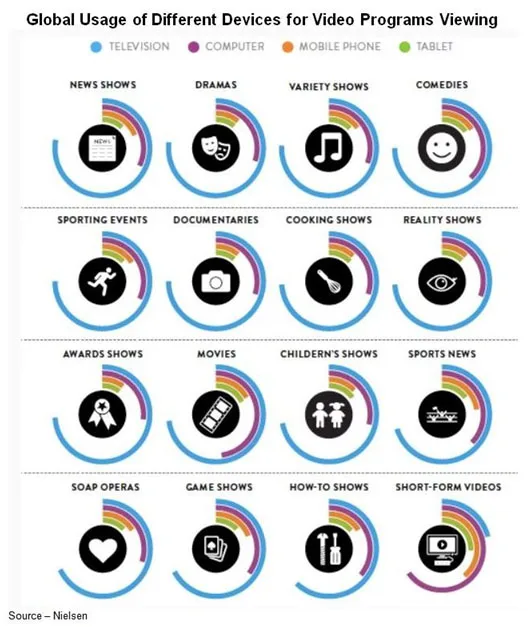
The only time the TV isn’t preferred is for the short-form stuff when you turn to your computer.
The rule of thumb is “the smaller the screen, the shorter the content,” so cat videos and stupid tricks are still safe.
At CES (Consumer Electronics Show), set manufacturers were already showing off the new screens to encourage consumers to upgrade … again.
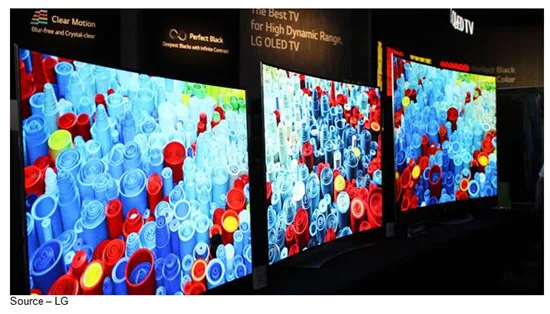
If you thought watching Waterworld on an HD screen at a tradeshow was awesome and House of Cards was awesome, then wait until you buy the disc set of the latest chapter of Star Wars.
Awesomest!
Why the disc set?
Well, there’s still a little work to be done like producing the content, which will require upgrades in camera and workflow technology. Then there’s distribution.
While the cable guy should be embracing HDR 4K UHD (gawd, I love acronyms) because they own most of the fiber to the house and it is the most predictable when it comes to stream quality control.
They have been so steeped in fat paychecks from the content owner and the content consumer; it’s just been hard for them to deal with the uncertainty of OTT (over the top) where you can count individuals rather than mass households.
And today, everyone is going OTT; no thanks to the spectacular success of Netflix in weaning people away from the 6 p.m. news at 6 p.m. model to watch what you want when you want it and as an added benefit on any device you want it.
In the U.S. OTT has a 94 percent penetration; and if Hastings has his way, Netflix will increase its share of OTT users to 71.7 percent in 2019, according to eMarketer.
Of course, Amazon and Hulu also plan to grow their share of viewers as well; but Netflix already has a significant footprint outside of the U.S. and has aggressive plans for new territories to conquer in 2016.
Their biggest challenge hasn’t been global consumer interest but keeping the consumer on their stream.

According to Nielsen, traditional TV has a leg up on streaming subscription services, but the gap is narrowing.
The problem is two-fold:
- Everyone is offering streaming and OTT content to the consumer
- At the first sign of a flicker or worse a buffering wheel, people are gone
If you think Gone in 60 Seconds was an exciting movie, you haven’t seen how fast a person is at hitting the remote control when the video stream flickers.
It requires a whole new approach to monitoring, measuring and maintaining the video stream.
Cable folks have traditionally looked at and tweeked their distribution after the fact but players like Netflix and Amazon are concentrating on handling everything in almost realtime by refining and redefining the quality of content and the quality of viewing experience.
To ensure they maintain their leadership – and grow globally – Netflix quietly began enhancing its content using ABR (adaptive bit rate) technology.
Simply stated, it means that depending upon your bandwidth connection; the content will automatically tune the bit rate of the video stream to the available bandwidth.
More importantly it can encode (control) the stream on a show-by-show, scene-by-scene basis so the viewer – O.K., not eyes in the sky video snobs – don’t see any difference whatever they’re watching.
It’s just all good!
Why waste shareholder money on it?
Simple. It also means they can decrease bandwidth load by as much as 20 percent; and those savings can get even better as they improve ABR.
Oh, they aren’t alone. A number of other groups of really smart people are working on more efficient use of the global bandwidth which isn’t infinite!
Again, so?
Well, video is moving to the cloud for production, storage and distribution; and the more efficient the technology, the better your viewing will be.
We know, you don’t care; but you really do.
Akamai, perhaps the world’s largest CDN (content delivery network), regularly reports on the health of the global Internet and recently reported that 15 percent of the world’s internet connections average 15 Mbps or higher.
That’s what they deem is 4K-ready.
Sure, they’d love 25 Mbps so your viewing content would have plenty of headroom; but for the time being, they can manage decent content streams at that speed.

The industry is showing steady improvement and was up 12 percent over last year with South Korea holding the number one spot. In second place was Sweden at 38%, up from 29% a year ago, followed by Norway at 37%, up from 21% a year ago. Switzerland and Hong Kong (both at 36%) rounded out the top 5 countries that are 4K ready.
Of course, I don’t care about the ROW (rest of world); just what I can get here at home and it’s still a work in progress.
The average connection speed in the U.S. climbed to 12.6 Mbps; and last year, the average was around 11.5 Mbps.
And of course I really don’t care about the performance where you live, only my state.
Speeds increased across the country, except for Connecticut and the state of Washington. Naturally, the residents of the District of Columbia got the fastest average connections (19.5 Mbps) because they need their entertainment while they’re busy making laws for us.
Others in the top five were Delaware (18.5 Mbps), Utah (16.2 Mbps), Massachusetts (16.2 Mbps) and Rhode Island (15.7 Mbps).
Darn. California wasn’t even in the top 10; but at least I live close enough to the CO (central office) of my OTT provider so the video streams are able to deliver darn good 4K content.

Steady progress is important regardless of where you live because people want – and expect – their digital content to come to them crystal clear.
And soon, they’re going to expect it in full HDR quality.
Think about it. An army of super good and super bad content just waiting to escape the dark side and move into the light.
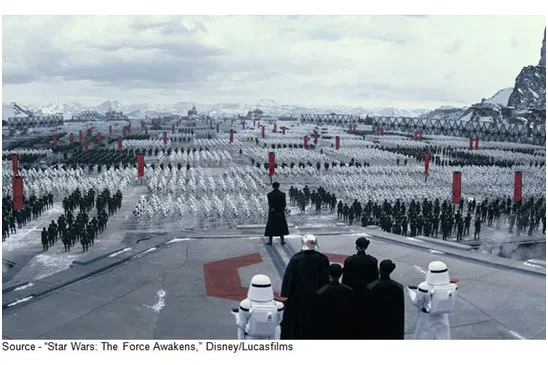 Remember what Kylo Ren said, “Forgive me. I feel it again… the call from light.” Adding…” I will fulfill our destiny.”
Remember what Kylo Ren said, “Forgive me. I feel it again… the call from light.” Adding…” I will fulfill our destiny.”
# # #